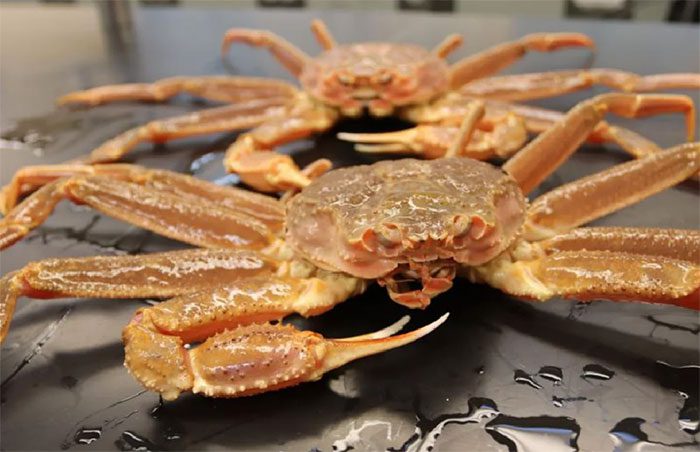In recent years, billions of snow crabs in the waters off Alaska have vanished. Scientists have pointed to a likely cause: Rising ocean temperatures may have led to their starvation.
This finding was announced after Alaska officials declared the cancellation of the snow crab harvest for the second consecutive year due to the critically low crab population.
Researchers at the National Oceanic and Atmospheric Administration (NOAA) in Alaska have observed in surveys since 2021 a link between the temperatures of the Bering Sea and the sudden disappearance of snow crabs.
The lead author of the study, marine biologist Cody Szuwalski from NOAA, stated: “When I received the first survey results in 2021, I was stunned. Everyone hoped that the survey had made an error and that there would be more crabs the following year.”
That year marked the first time the snow crab fishery in Alaska had to cease operations. Fishermen believed the decline in crab numbers was due to overfishing.
However, this fishing activity has been regulated through conservation measures, making it insufficient to fully explain the significant loss of Alaskan crabs.
Researcher Szuwalski noted that climate change is genuinely hindering plans, models, and management systems.

Warmer temperatures are related to increased mortality in adult crabs. (Source: NOAA).
In the study, scientists analyzed what may have happened to the crab population since 2020, dividing their findings into two scenarios.
- The first is that the crabs have migrated elsewhere.
- The second is that they have died.
After examining the northern Bering Sea, the western waters of Russia, and even deeper ocean layers, they concluded that it was unlikely the crabs had migrated. The most probable explanation left is that they have died.
Warmer temperatures and population density are connected to higher mortality rates in adult crabs, with the underlying reason being that they are lacking food.
Snow crabs thrive in cold waters with temperatures below 2 degrees Celsius. Warmer seawater can disrupt the metabolic processes of crabs and increase their caloric needs.
However, rising sea temperatures also disrupt the food chain in the Bering Sea, preventing snow crabs from finding adequate food to meet their energy requirements.
Scientists report that temperatures around the Arctic have warmed four times faster than the rest of the planet. Climate change is causing sea ice in the Arctic region to melt rapidly, especially in Alaska’s Bering Sea.
Biologist Szuwalski remarked: “The years 2018 and 2019 were extremely unusual in terms of sea ice in the Bering Sea, something we had never observed before.”
He added that what is happening to Alaskan crabs serves as evidence of the rapidly escalating climate crisis, affecting the survival of many species and humans.
Although he anticipated this situation would eventually occur, he did not expect it to happen “so soon.”
He described this as a surprising and stark change in the crab population. In the long term, snow crabs are predicted to move north as the ice in the Bering Sea melts. Consequently, humans may no longer see them in abundance.


















































